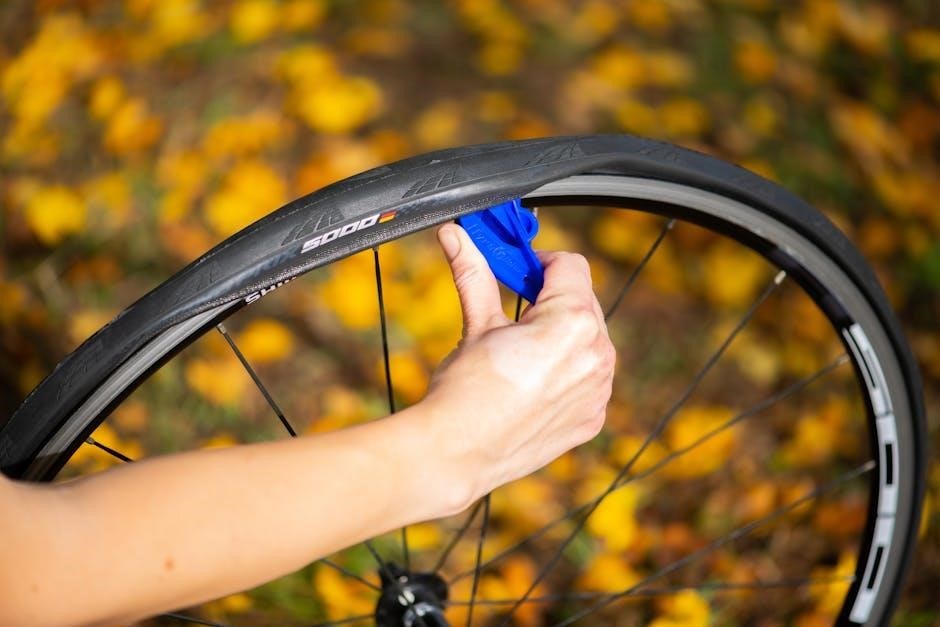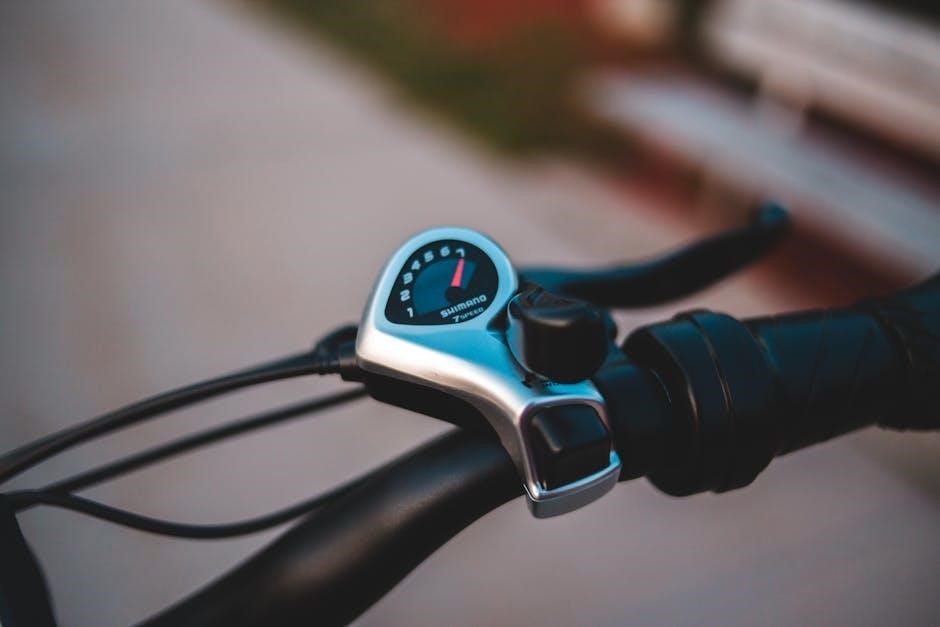Property and Casualty (P&C) insurance protects against financial losses from property damage or legal liability. It’s crucial for risk management, offering security and stability in unforeseen events, making it essential for both personal and business finance. This guide provides foundational knowledge, exam strategies, and practical insights to master P&C insurance concepts effectively.
1.1. What is Property and Casualty Insurance?
Property and Casualty (P&C) insurance refers to a broad category of insurance policies designed to protect individuals and businesses from financial losses due to property damage or legal liability. It encompasses two primary components: property insurance, which covers physical assets like homes, vehicles, or business equipment against perils such as fire, theft, or natural disasters; and casualty insurance, which provides protection against legal liabilities arising from accidents, injuries, or property damage caused to others. P&C insurance is essential for managing risks and ensuring financial stability in the face of unforeseen events. Understanding its fundamentals is crucial for making informed decisions about coverage needs and effectively mitigating potential losses. This guide provides a detailed overview of these concepts to help you grasp the basics of P&C insurance and its role in personal and commercial risk management.
1.2. Importance of Property and Casualty Insurance
Property and Casualty (P&C) insurance plays a vital role in safeguarding individuals and businesses from unforeseen financial losses. It provides protection against property damage, liability, and legal risks, ensuring financial stability and peace of mind. Without proper coverage, the costs of repairing or replacing damaged property, or settling legal claims, could be devastating. P&C insurance is essential for managing risks effectively, allowing individuals and businesses to recover quickly from unexpected events. Additionally, it helps comply with legal requirements and maintains business continuity. By transferring risk to an insurer, policyholders can focus on their personal and professional goals without the burden of potential financial ruin. Understanding the importance of P&C insurance is the first step in making informed decisions about coverage, ensuring adequate protection against life’s uncertainties. This guide emphasizes its significance and how it applies to real-world scenarios, helping you make smarter choices for your insurance needs.
1.3. Purpose of a Study Guide
A study guide serves as a comprehensive resource to help individuals master the fundamentals of Property and Casualty (P&C) insurance. It organizes complex information into clear, digestible sections, making it easier to understand and retain key concepts. The guide provides structured learning pathways, ensuring users cover all essential topics systematically. It includes summaries, definitions, and practical examples to reinforce learning. Additionally, the guide offers exam strategies, such as time management and test-taking techniques, to boost confidence and performance. By focusing on high-yield topics and common exam questions, it helps learners identify and address knowledge gaps. The ultimate goal of a study guide is to empower users with the knowledge and skills needed to excel in their exams and excel in their insurance careers. It acts as both a reference and a training tool, tailored to meet the needs of aspiring professionals in the P&C insurance field.

Key Concepts in Property and Casualty Insurance
Property and casualty insurance involves key concepts like property coverage, liability protection, and risk management strategies. These elements form the foundation for understanding insurance policies and their applications.
2.1. Property Insurance Basics
Property insurance protects physical assets like homes, businesses, and personal belongings from damage or loss due to perils such as fire, theft, or natural disasters. It provides financial compensation for repairs or replacements, ensuring stability and security. Key aspects include coverage types like homeowners, commercial, or auto insurance, each tailored to specific risks. Understanding policy terms, deductibles, and coverage limits is essential for effective protection. Property insurance is a cornerstone of risk management, helping individuals and businesses recover from unforeseen events. This section explores the fundamentals, including policy forms, covered perils, and exclusions, to build a solid foundation for further study in property and casualty insurance.
2.2. Casualty Insurance Basics

Casualty insurance protects individuals and businesses from legal liability for accidents, injuries, or property damage caused to others. It covers medical expenses, legal defense costs, and potential settlements, offering financial protection against unforeseen events. This type of insurance is essential for mitigating risks that could lead to significant financial losses. Casualty insurance includes liability coverage, such as general liability, professional liability, and auto liability, each addressing specific risks. Understanding the scope of coverage, policy limits, and exclusions is crucial for ensuring adequate protection. Casualty insurance plays a vital role in safeguarding personal and business assets, providing peace of mind and financial security in the face of unexpected liabilities. This section focuses on the fundamental principles and key aspects of casualty insurance, preparing you for deeper exploration in subsequent chapters.
2.3. Risk Management Basics
Risk management is a critical component of property and casualty insurance, focusing on identifying, assessing, and mitigating risks to minimize potential losses. It involves strategies to avoid, transfer, or reduce risks, ensuring financial stability and security. Key aspects include risk identification, evaluating the likelihood and impact of events, and implementing measures to control or transfer risks. Effective risk management helps individuals and businesses protect their assets and liability exposures. By understanding risk factors and applying appropriate mitigation strategies, policyholders can reduce vulnerability to unforeseen events. This section provides foundational knowledge on risk management principles, essential for making informed decisions in property and casualty insurance. Understanding these basics is vital for developing a comprehensive risk management plan tailored to specific needs, ensuring long-term financial protection and peace of mind.

Exam Preparation and Strategy
Effective exam preparation involves understanding the format, creating a structured study plan, and utilizing resources like textbooks, online courses, and practice exams to ensure success.
3.1. Understanding the Exam Format
Understanding the exam format is crucial for effective preparation. The Property and Casualty Insurance exam typically consists of multiple-choice questions, scenario-based problems, and true/false statements. The format is designed to assess your knowledge of insurance principles, risk management, and legal considerations. Familiarizing yourself with the structure helps you allocate time efficiently during the test. Most exams are timed, with a specific number of questions to be answered within a set period. Knowing the format allows you to practice pacing and prioritize challenging questions. Additionally, many exams include a mix of conceptual and practical questions, requiring both theoretical knowledge and real-world application. By understanding the format, you can tailor your study plan to focus on weak areas and improve your test-taking strategies. This knowledge also reduces exam-day anxiety, enabling you to approach the test with confidence.
3.2. Exam Content and Objectives
The Property and Casualty Insurance exam evaluates your understanding of key concepts, policies, and regulations. The content covers property insurance basics, casualty insurance fundamentals, risk management principles, and ethical considerations. It also includes sections on insurance contracts, legal implications, and claims processes. The exam aims to assess your ability to apply knowledge in real-world scenarios, ensuring you can provide effective insurance solutions. Objectives include testing your comprehension of policy types, coverage limits, and risk assessment techniques. Additionally, the exam focuses on your understanding of regulatory compliance and professional ethics. By mastering these areas, you demonstrate your readiness to work in the insurance industry. The content is structured to ensure a balanced assessment of both theoretical knowledge and practical application, preparing you for the challenges of a career in property and casualty insurance.
3.3. Developing a Study Plan
Creating a structured study plan is essential for effectively preparing for the Property and Casualty Insurance exam. Start by understanding the exam format and content to identify key areas of focus. Break down your study material into manageable sections, such as property insurance basics, casualty insurance fundamentals, and risk management principles. Allocate specific time slots for each topic, ensuring a balanced approach. Utilize textbooks, online courses, and practice exams to reinforce your understanding. Prioritize challenging topics and dedicate extra time to mastering them. Incorporate regular practice sessions with sample questions to assess your progress. Join study groups or online forums for collaborative learning and feedback. Maintain a consistent study schedule and avoid cramming. Finally, include breaks and stress management techniques to stay focused and motivated throughout your preparation. A well-organized study plan will help you stay on track and achieve your goal of passing the exam with confidence.

Study Resources and Materials
Essential resources include textbooks, online courses, and practice exams. Textbooks provide detailed insights, while online courses offer structured learning. Practice exams help assess understanding and readiness for the actual test.
4.1. Textbooks and Study Guides
Textbooks and study guides are fundamental resources for mastering property and casualty insurance. They provide in-depth knowledge of key concepts, ensuring a solid understanding of insurance principles, contracts, and regulations. Many guides, such as the “Property and Casualty Insurance Exam Prep” by Leon Hammond, are designed to help candidates pass their licensing exams with confidence. These materials often include detailed explanations of property and liability coverage, risk management strategies, and ethical considerations. A popular option is the “Property and Casualty Insurance Study Guide PDF,” which offers a comprehensive overview of essential topics. These guides are structured to cover exam-specific content, making them ideal for focused study. They also include practice questions, tips, and strategies to enhance exam performance. By leveraging these resources, learners can gain a deeper understanding of the subject matter and improve their chances of success in the insurance field.
4.2. Online Courses and Tutorials
Online courses and tutorials are excellent supplementary resources for studying property and casualty insurance. Platforms offer comprehensive lessons covering key concepts like risk management, insurance contracts, and claims processes. These courses are designed to align with exam objectives, ensuring focused preparation. Many include interactive modules, video lectures, and downloadable materials, such as PDF study guides, to enhance learning. They provide flexibility, allowing students to study at their own pace. Additionally, some courses offer access to expert instructors for clarification on complex topics. Online tutorials often complement textbooks and practice exams, offering a well-rounded study experience. They are particularly useful for visual learners and those who prefer self-paced learning. By combining online courses with study guides, learners can deepen their understanding and improve exam readiness effectively.

4.3. Practice Exams and Questions
Practice exams and questions are indispensable tools for preparing for the Property and Casualty Insurance exam. They simulate real exam conditions, helping candidates assess their readiness and identify weak areas. Many study guides include practice questions, which cover topics like property insurance basics, casualty insurance fundamentals, and ethics. These questions often mirror the format of the actual exam, including multiple-choice, true/false, and scenario-based queries. Answering practice questions helps reinforce key concepts and builds confidence. Additionally, some resources provide detailed explanations for correct and incorrect answers, enabling learners to understand their mistakes. Regularly taking practice exams improves time management and reduces test anxiety. They are an essential complement to textbooks and online courses, ensuring a well-rounded preparation strategy. By consistently practicing, candidates can refine their knowledge and approach the exam with greater assurance.

The Claims Process
The claims process is a critical procedure for addressing property damage or liability losses. It involves reporting the incident, providing evidence, and awaiting assessment and resolution by the insurer.
5.1. Understanding Insurance Claims
Understanding insurance claims is essential for effectively navigating the process of seeking compensation for losses. A claim is a formal request to an insurer to cover damages or liabilities, ensuring financial protection. Property claims typically involve damage to physical assets, such as homes or vehicles, while casualty claims address legal liabilities, like injuries or harm caused to others. The process begins with reporting the incident, providing detailed documentation, and awaiting assessment by the insurer. Timely submission and accurate information are crucial for a smooth resolution. Claims may be approved, denied, or partially covered, depending on policy terms and evidence provided. Policyholders should review their coverage to ensure they understand what is included and any exclusions. This knowledge helps manage expectations and facilitates a more efficient claims process, ultimately ensuring fair compensation for covered events.
5.2. The Claims Process Explained
The claims process involves several structured steps to ensure efficient resolution. First, policyholders must report the incident to their insurer, providing detailed information about the event. Next, the insurer assigns an adjuster to assess the damage or liability, verifying the claim’s validity. Documentation, such as repair estimates or medical records, is crucial for this evaluation. Once approved, the insurer calculates the compensation based on policy terms and deductibles. Payment is then issued, covering repairs, replacements, or legal obligations. If denied, the insurer explains the reasoning, often citing policy exclusions. Policyholders can appeal decisions if they disagree. Timely communication and thorough documentation are key to a smooth process. Understanding these steps helps policyholders navigate the system effectively, ensuring fair and prompt resolution of their claims.
5.3. Common Mistakes to Avoid
When navigating the claims process, it’s essential to avoid common pitfalls that could delay or complicate resolution. One major mistake is providing incomplete or inaccurate documentation, which can lead to claim denials. Policyholders should ensure all details are truthful and supported by evidence. Another error is failing to notify the insurer promptly, as delays can void coverage. Misunderstanding policy terms is also prevalent; policyholders should review their policies carefully to avoid assumptions about coverage. Additionally, neglecting to communicate effectively with adjusters can hinder progress. Policyholders should ask questions and seek clarification to ensure they understand the process. Lastly, ignoring deductibles or coverage limits can lead to financial surprises. Being proactive, organized, and informed are key to avoiding these mistakes and ensuring a smoother claims experience.

Risk Assessment and Mitigation
Risk assessment identifies and evaluates potential losses, while mitigation strategies reduce exposure. Understanding these concepts helps manage risks effectively, ensuring financial security against unforeseen events and liabilities.
6;1. Identifying Risks
Identifying risks is the first step in effective risk management. It involves recognizing potential threats to property and liability, such as natural disasters, accidents, or legal liabilities. Property risks include damage from fire, theft, or vandalism, while casualty risks involve legal responsibilities for injuries or harm caused to others. Understanding these risks allows individuals and businesses to assess their exposure and take appropriate measures. This process is crucial for creating tailored insurance policies that address specific vulnerabilities. By identifying risks early, policyholders can mitigate potential financial losses and ensure long-term stability. Proper identification also helps in selecting the right coverage options and understanding policy limits. Regular risk assessments should be conducted to adapt to changing circumstances and emerging threats, ensuring comprehensive protection over time.
6.2. Assessing Risk Factors
Assessing risk factors involves evaluating the likelihood and potential impact of identified risks. This step helps determine the severity of threats and informs appropriate mitigation strategies. Property-related risks are assessed based on factors like location, construction type, and historical claims data. Casualty risks consider elements such as business operations, employee safety records, and legal exposure. Insurers analyze these factors to estimate the probability of claims and their potential costs. Advanced tools, including data analytics and risk modeling, enhance the accuracy of assessments. Regular reassessments ensure that risk profiles remain up-to-date, reflecting changes in operations or environmental conditions. Accurate risk assessment is critical for balancing coverage needs with premium costs. It also enables policyholders to prioritize mitigation efforts, ensuring resources are allocated effectively to manage the most significant risks. This process is fundamental to creating tailored insurance solutions that align with individual or organizational risk profiles.
6.3. Mitigation Strategies
Risk mitigation strategies are essential to reduce the likelihood or impact of potential losses. These strategies often involve transferring, avoiding, or controlling risks. Property-related risks can be mitigated through measures like installing security systems, reinforcing structures, and implementing fire safety protocols. Casualty risks may be addressed by improving workplace safety, providing employee training, and purchasing liability insurance. Regular risk assessments help identify vulnerabilities and guide mitigation efforts. Additionally, maintaining proper insurance coverage ensures financial protection against unforeseen events. Effective mitigation strategies not only reduce the probability of claims but also minimize potential damages. By proactively addressing risks, individuals and businesses can safeguard their assets and maintain financial stability. Tailored mitigation plans, aligned with specific risk profiles, are crucial for achieving optimal protection and peace of mind. This proactive approach is integral to a comprehensive risk management framework.

Ethics and Legal Considerations
Ethics and legal considerations in Property and Casualty Insurance involve upholding professional conduct, adhering to laws, and ensuring regulatory compliance to protect clients’ interests and maintain trust in the industry.
7.1. Professional Ethics in Insurance
Professional ethics in insurance are fundamental to building trust and integrity in the industry. Insurance professionals must adhere to a strict code of conduct, ensuring transparency, honesty, and fairness in all dealings. This includes maintaining confidentiality, avoiding conflicts of interest, and prioritizing clients’ needs above personal gains. Ethical practices also involve providing accurate information, avoiding misleading statements, and ensuring that clients fully understand their policies. By upholding these ethical standards, insurance professionals foster long-term relationships and contribute to the overall credibility of the industry. Additionally, ethical behavior helps mitigate risks and promotes a positive public image, which is essential for the sustained growth and success of the insurance sector. Adhering to ethical guidelines is not just a professional obligation but also a societal responsibility.
7.2. Legal Implications of Insurance
Understanding the legal implications of insurance is critical for both professionals and policyholders. Insurance policies are legally binding contracts, and their interpretation often involves complex legal principles. Key aspects include the doctrine of utmost good faith, requiring both parties to act honestly and disclose all material facts. Additionally, insurance contracts must meet legal requirements such as offer, acceptance, and consideration. Liability coverage, a cornerstone of casualty insurance, protects policyholders from legal obligations arising from bodily injury or property damage to third parties. Legal implications also extend to regulatory compliance, as insurance companies must adhere to state and federal laws governing policy terms, rates, and claims practices. Furthermore, disputes over claims or policy interpretations may lead to litigation, emphasizing the importance of understanding legal frameworks. Staying informed about evolving laws and regulations ensures compliance and protects all parties involved in the insurance process.
7.3. Regulatory Compliance
Regulatory compliance is a cornerstone of the property and casualty insurance industry, ensuring that companies operate within legal and ethical standards. Insurance providers must adhere to both state and federal regulations, which vary by jurisdiction. These regulations govern policy terms, premium rates, and claims handling practices. Compliance also involves maintaining adequate reserves to pay claims and ensuring transparency in business operations. Regulatory bodies, such as state insurance departments, oversee these requirements to protect consumer interests and maintain market stability. Failure to comply can result in fines, legal action, or loss of licensure. Staying updated on regulatory changes is essential for insurers to avoid penalties and maintain trust with policyholders. Additionally, compliance training for employees helps ensure that all operations align with legal standards, fostering a culture of adherence and accountability within the organization.

Advanced Topics in Property and Casualty Insurance
Delve into advanced areas like commercial property, liability, and emerging risks such as cyber insurance, essential for modern insurance strategies and comprehensive risk management.
8.1. Commercial Property Insurance
Commercial property insurance is a cornerstone of business risk management, safeguarding physical assets such as buildings, equipment, and inventory from damage or loss. It is designed to protect businesses from financial setbacks due to perils like fire, theft, vandalism, or natural disasters. This coverage is essential for maintaining business continuity and ensuring stability during unforeseen events. Policies can be tailored to specific business needs, offering varying levels of protection. Understanding the types of commercial property insurance, such as named-peril or open-peril policies, is crucial for selecting appropriate coverage. Additionally, businesses must assess their unique risks, such as location-based hazards or industry-specific threats, to ensure comprehensive protection. This section delves into the intricacies of commercial property insurance, providing insights into policy types, coverage options, and strategies for mitigating risks effectively.
8.2. Commercial Casualty Insurance
Commercial casualty insurance is a vital component of business protection, focusing on liability coverage that shields companies from financial losses due to legal responsibilities. It covers damages or injuries to third parties, such as customers, employees, or clients, ensuring businesses can manage legal claims and associated expenses. This insurance is essential for mitigating risks that could lead to significant financial setbacks. Key coverages include general liability insurance, which addresses bodily injury, property damage, and advertising injury, as well as umbrella policies that provide excess liability protection beyond standard policy limits. Commercial casualty insurance also encompasses workers’ compensation, protecting employees injured on the job. Understanding these coverages is crucial for businesses to safeguard their assets and maintain operational continuity. Tailoring policies to specific industry risks ensures comprehensive protection against potential liabilities. This section explores the nuances of commercial casualty insurance, emphasizing its role in risk management and financial security.
8.3. Cyber Insurance and Emerging Risks
Cyber insurance has emerged as a critical component of modern risk management, addressing the growing threat of cyberattacks, data breaches, and digital vulnerabilities. As businesses increasingly rely on technology, the need for robust cyber insurance solutions becomes paramount. This coverage typically includes protection against data breaches, ransomware attacks, and business interruption due to cyber events, ensuring financial recovery and operational continuity. Cyber insurance is not limited to businesses; individuals also benefit from policies that safeguard against identity theft and privacy violations. Emerging risks, such as climate change, pandemics, and AI-related liabilities, further complicate the risk landscape, requiring innovative insurance solutions. Understanding these evolving risks and their corresponding insurance products is essential for both personal and commercial risk management. Staying informed about these developments ensures that individuals and businesses can adapt and maintain adequate protection in a rapidly changing world. Cyber insurance and emerging risks are central to modern property and casualty insurance strategies.






























